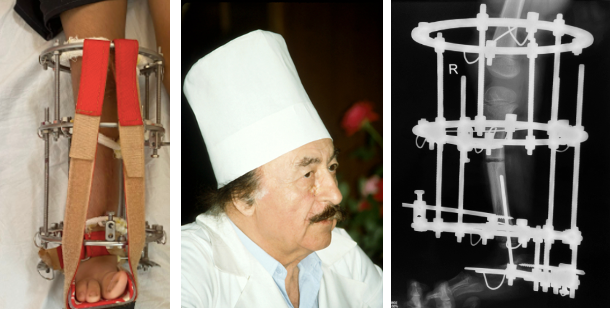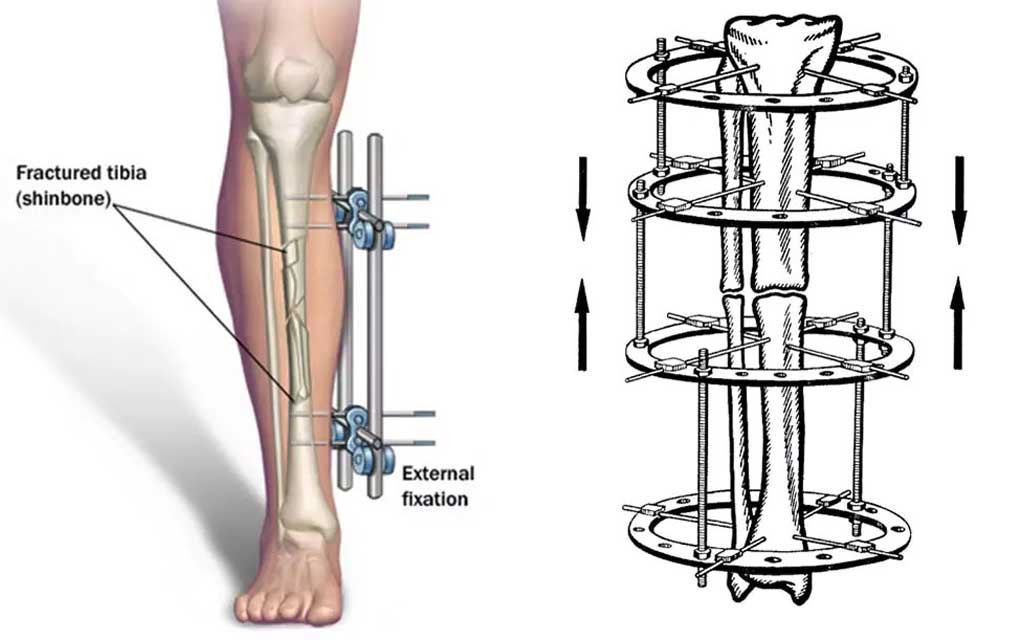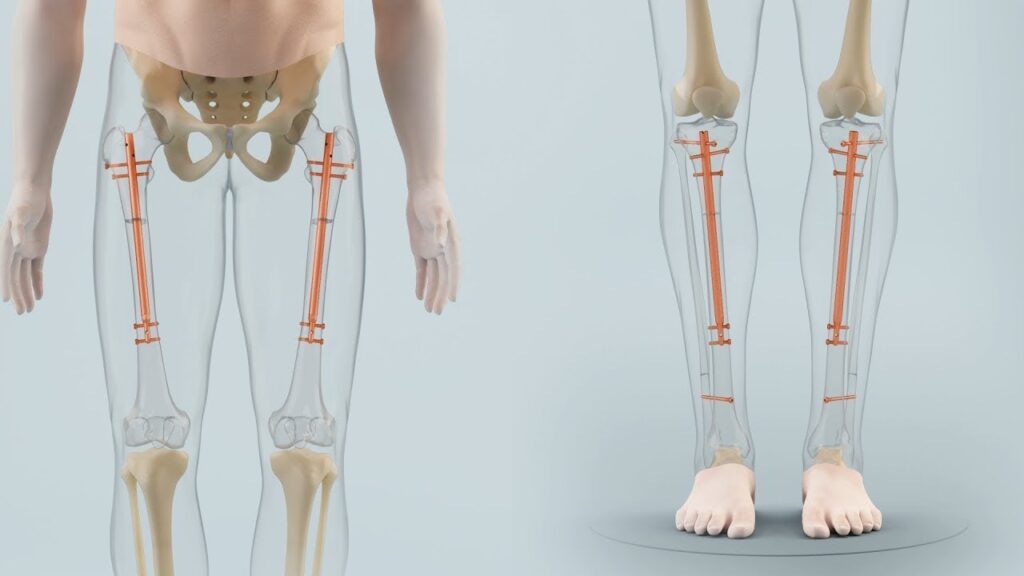Discover the Ilizarov Method, its applications in limb lengthening and orthopedic surgery, and how this revolutionary technique has transformed patient outcomes.

Outline
| Headings | Sub-Headings |
|---|---|
| Introduction | – Understanding the Ilizarov Method |
| History of the Ilizarov Method | – Origin and Development |
| – Key Milestones and Innovations | |
| Principles of the Ilizarov Method | – Biological and Mechanical Principles |
| – Distraction Osteogenesis | |
| Applications of the Ilizarov Method | – Limb Lengthening |
| – Deformity Correction | |
| – Trauma and Fracture Management | |
| – Joint Contracture and Stiffness | |
| Procedure and Techniques | – Pre-Surgery Evaluation |
| – Surgical Procedure | |
| – Post-Surgery Care and Rehabilitation | |
| Advantages of the Ilizarov Method | – Minimally Invasive Approach |
| – Versatility and Adaptability | |
| – High Success Rates | |
| Risks and Complications | – Common Surgical Risks |
| – Long-Term Complications | |
| – Mitigating Risks | |
| Success Stories and Case Studies | – Real-Life Experiences |
| – Medical Case Studies | |
| Technological Advances and Future Directions | – Modern Enhancements |
| – Future Innovations | |
| FAQs | – |
| – What is the Ilizarov Method? | |
| – How does the Ilizarov Method work? | |
| – What conditions can be treated with the Ilizarov Method? | |
| – What are the benefits of the Ilizarov Method? | |
| – What are the risks associated with the Ilizarov Method? | |
| – How long is the recovery period with the Ilizarov Method? | |
| Conclusion | – |
The Ilizarov Method: Revolutionizing Limb Lengthening and Orthopedic Surgery
The Ilizarov Method stands as a revolutionary technique in orthopedic surgery, particularly in limb lengthening and deformity correction. This comprehensive guide explores the history, principles, applications, procedure, and benefits of the Ilizarov Method, highlighting its transformative impact on patient outcomes.
Introduction
Limb lengthening and deformity correction have seen significant advancements thanks to the Ilizarov Method. Developed in the mid-20th century, this method has revolutionized orthopedic surgery, offering new hope for patients with complex bone issues.
History of the Ilizarov Method
Origin and Development
The Ilizarov Method was developed by Dr. Gavriil Ilizarov, a Soviet orthopedic surgeon, in the 1950s. Initially used to treat Soviet soldiers with complex fractures, the method quickly gained recognition for its effectiveness in bone regeneration and deformity correction.
Key Milestones and Innovations
Key milestones in the development of the Ilizarov Method include its introduction to Western medicine in the 1980s, the development of the circular external fixator, and subsequent refinements that have improved patient outcomes and expanded its applications.
Principles of the Ilizarov Method
Biological and Mechanical Principles
The Ilizarov Method is based on the principles of distraction osteogenesis, which involves the gradual mechanical stretching of bone tissue to stimulate new bone formation. This process relies on the body’s natural healing capabilities and precise mechanical control.
Distraction Osteogenesis
Distraction osteogenesis involves cutting the bone (osteotomy) and using an external fixator to slowly separate the bone segments. This creates a gap that fills with new bone tissue, effectively lengthening the bone.
Applications of the Ilizarov Method
Limb Lengthening
Limb lengthening is one of the primary applications of the Ilizarov Method. It is used to treat congenital limb length discrepancies, growth abnormalities, and post-traumatic shortening.

Deformity Correction
The Ilizarov Method is highly effective in correcting bone deformities, including angular and rotational deformities. It allows for precise adjustments to achieve optimal alignment and function.
Trauma and Fracture Management
The method is also used in managing complex fractures and nonunions (fractures that fail to heal). The Ilizarov fixator provides stable fixation and promotes bone healing.
Joint Contracture and Stiffness
In cases of joint contracture and stiffness, the Ilizarov Method can help restore joint mobility by gradually stretching the surrounding soft tissues and bones.
Procedure and Techniques
Pre-Surgery Evaluation
A thorough pre-surgery evaluation is essential to determine the patient’s suitability for the Ilizarov Method. This includes medical history, physical examination, and imaging studies to assess bone health and alignment.
Surgical Procedure
The surgical procedure involves making small incisions to insert pins and wires into the bone, which are then attached to a circular external fixator. The bone is cut (osteotomy), and the fixator is used to gradually separate the bone segments.
Post-Surgery Care and Rehabilitation
Post-surgery care includes regular follow-up appointments to adjust the fixator and monitor bone healing. Physical therapy is crucial to maintain joint mobility and muscle strength during the lengthening process.
Advantages of the Ilizarov Method
Minimally Invasive Approach
The Ilizarov Method is minimally invasive, with small incisions and minimal soft tissue disruption. This reduces the risk of complications and promotes faster recovery.
Versatility and Adaptability
The method is highly versatile and adaptable, allowing for precise control over bone lengthening and deformity correction. It can be used for a wide range of orthopedic conditions.
High Success Rates
The Ilizarov Method has high success rates, with many patients achieving significant improvements in bone length, alignment, and function.

Risks and Complications
Common Surgical Risks
Common risks include infection at the pin sites, nerve or blood vessel injury, and delayed bone healing. These risks are managed through careful surgical technique and post-surgery care.
Long-Term Complications
Long-term complications can include joint stiffness, muscle contractures, and re-fracture. Regular monitoring and rehabilitation are essential to minimize these risks.
Mitigating Risks
Mitigating risks involves a multidisciplinary approach, including optimizing the patient’s health before surgery, using advanced surgical techniques, and providing thorough post-surgery care.
Success Stories and Case Studies
Real-Life Experiences
Many patients have shared their success stories following treatment with the Ilizarov Method. These testimonials highlight the transformative impact of the procedure on their mobility, quality of life, and self-esteem.
Medical Case Studies
Medical case studies provide valuable insights into the outcomes and challenges of using the Ilizarov Method. These studies contribute to the continuous improvement of techniques and patient care.
Technological Advances and Future Directions
Modern Enhancements
Modern enhancements to the Ilizarov Method include the development of computer-assisted fixators and motorized lengthening devices, which offer greater precision and patient comfort.
Future Innovations
Future innovations may include the use of robotics, 3D printing, and regenerative medicine to enhance the precision, safety, and outcomes of the Ilizarov Method.
FAQs
What is the Ilizarov Method?
The Ilizarov Method is a surgical technique used for limb lengthening and deformity correction, based on the principles of distraction osteogenesis.
How does the Ilizarov Method work?
The method involves cutting the bone and using an external fixator to gradually separate the bone segments, stimulating new bone formation in the gap.
What conditions can be treated with the Ilizarov Method?
Conditions treated include limb length discrepancies, bone deformities, complex fractures, nonunions, and joint contractures.
What are the benefits of the Ilizarov Method?
Benefits include a minimally invasive approach, high success rates, and versatility in treating a wide range of orthopedic conditions.
What are the risks associated with the Ilizarov Method?
Risks include infection, nerve or blood vessel injury, delayed bone healing, joint stiffness, and muscle contractures.
How long is the recovery period with the Ilizarov Method?
Recovery can take several months to a year, depending on the length of bone being lengthened and the patient’s overall health. The process includes regular adjustments and physical therapy.
Conclusion
The Ilizarov Method has revolutionized limb lengthening and orthopedic surgery, offering new hope for patients with complex bone issues. Understanding the principles, applications, and benefits of this method can help patients and healthcare providers achieve successful outcomes.



